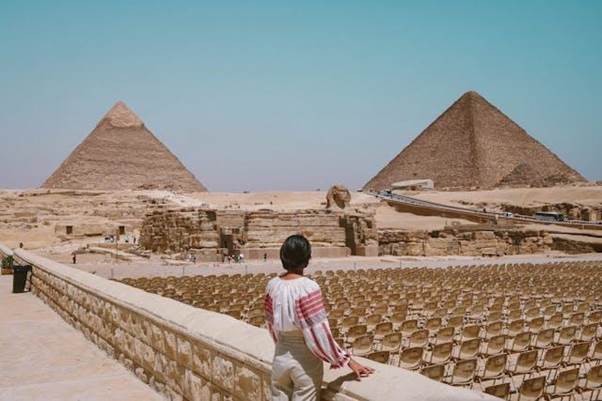Imagine walking across a blazing desert and spotting what looks like a pool of water glimmering in the distance only to discover nothing but sand. This stunning illusion is known as a desert mirage, a captivating optical illusion in desert regions created by atmospheric refraction and heat distortion.
Table of Contents
In this article, we’ll explore what desert mirages are, how they form, their types, scientific explanations, and their significance in understanding atmospheric optics and human perception.

Understanding the Science of Desert Mirages
Definition and Basic Concept
A desert mirage is a natural optical illusion that occurs when light rays bend due to variations in air temperature and density near the Earth’s surface. This refraction of light makes distant objects appear displaced, distorted, or even inverted. Often seen in vast deserts or hot roads, these illusions trick the eye into perceiving false water images or shimmering horizons.
The Role of Atmospheric Refraction
When sunlight passes through hot air layers close to the ground, it bends upward because hot air is less dense than cool air above it. This light bending phenomenon creates an illusion of water on the surface a typical inferior mirage. It’s the same reason you may notice shimmering air effects on scorching highways.
The Formation Process of Desert Mirages
Heat, Air Density, and Refraction
The mirage formation process begins when the ground becomes intensely heated by the desert sunlight effect. The hot surface warms the air directly above it, producing a steep temperature inversion where the air temperature changes rapidly with height. The bending of light rays through these layers causes the mirage effect a displaced or distorted image appearing to hover above or below the horizon.
Key Stages of Mirage Creation
- Surface Heating: The sun heats the desert ground, causing the lower air layer to become extremely hot.
- Temperature Gradient: Cool air remains above, while hot air near the surface becomes less dense.
- Light Refraction: Incoming light bends upward when moving from cooler to hotter air, producing the illusionary oasis effect.
- Visual Distortion: The eye perceives refracted light as reflections, leading to visual distortion and the belief of seeing water.
Types of Desert Mirages
Inferior Mirage
This is the most common type of desert mirage, formed when light bends upward due to hot ground and cooler air above it. It often creates the illusion of water or sky reflections on sand, known as the sky reflection on sand effect.
Superior Mirage
Occurring in colder climates or during temperature inversions, the superior mirage happens when light bends downward, making distant objects appear higher or floating. Though rare in deserts, it’s often observed over cold sea surfaces or polar regions.
Fata Morgana: The Extreme Mirage
A Fata Morgana is an advanced form of mirage effect, where multiple layers of hot and cold air produce stacked, shifting, and highly distorted images. This rare optical phenomenon can make mountains, ships, or cities appear in the sky.
Atmospheric Optics Behind the Mirage
Refraction and Reflection of Light
The light reflection and refraction principles explain why desert mirages deceive our eyes. Refracted light waves bend at varying angles due to air density differences, creating the real vs. apparent image distinction. In other words, the image you see isn’t where the object actually is it’s merely a product of atmospheric optics and heat-induced illusion.
Air Layers and Density Differences
The air density difference between the hot and cool layers controls the strength and clarity of the mirage formation. Stronger temperature contrasts result in more pronounced visual distortions and clearer false water images.
Real-World Examples and Observations
Desert Environments and Illusions
• In the Sahara Desert, travelers often report seeing illusionary oases stretching across the horizon.
• In Death Valley, desert heat waves create stunning sun and sand illusions resembling rippling water.
• Even on highways, drivers experience hot surface reflections, mimicking puddles caused by atmospheric refraction.
These examples highlight how mirage effects are not limited to remote deserts but can occur anywhere intense heating meets open space.
Cultural and Psychological Impact
Throughout history, desert illusions inspired myths of lost lakes and ghostly cities. For desert travelers, these mirages symbolized both hope and deception a reminder of how visual perception in heat can be easily fooled by nature’s tricks.

Importance of Studying Desert Mirages
Scientific and Educational Value
Understanding desert mirages provides insight into atmospheric optics, refraction of light, and air temperature inversion. They help scientists study light behavior, visual perception, and climate effects on air layers.
Environmental Awareness
The study of optical illusion in desert conditions also aids meteorologists in understanding heat-induced illusions and atmospheric refraction patterns, valuable for weather prediction and environmental monitoring.
Challenges in Observing Desert Mirages
Misinterpretation and Navigation Risks
In arid regions, travelers may mistake mirage effects for real water sources, leading to dangerous navigation errors. Pilots, sailors, and drivers must also recognize horizon illusions to avoid misjudging distances.
Preservation of Observation Sites
As desert landscapes change with climate and human activity, some mirage-prone regions are becoming harder to study. Protecting these natural optical illusions ensures continued observation of this atmospheric phenomenon.
Conclusion
Desert mirages are among nature’s most captivating tricks proof of how light bending phenomena and heat distortion can create visions of beauty and confusion. They remind us that reality depends on perspective and perception, especially under the intense heat of the sun. Studying mirage formation deepens our understanding of atmospheric optics and the bending of light rays that shape our world. Next time you see a glimmer on the horizon, rememberit’s not water, but nature’s masterpiece of illusion.